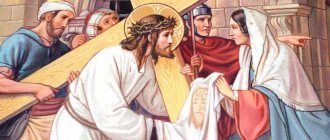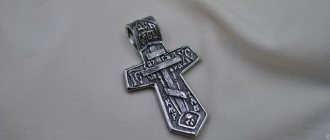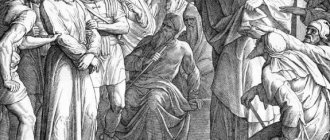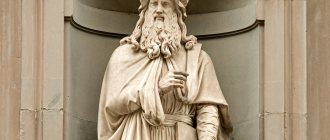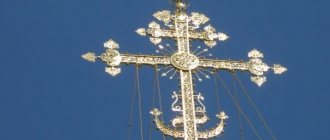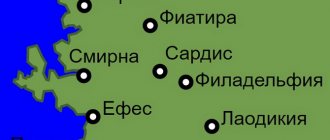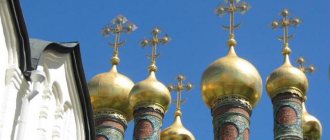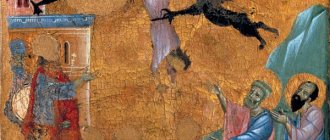Today, remembering biblical stories, we cannot even imagine what hellish torment Christ experienced
Subscribe and read Express Newspaper in:
Today, remembering biblical stories, we cannot even imagine what kind of hellish torment Christ experienced. Research conducted over the years, supported by medical reports, confirmed the words of Cicero: death on the cross is “the most terrible of all executions that people have come up with.”
Crucifixion as a method of execution was introduced into use by the Babylonians, who did not want to desecrate the earth with the dead bodies of executed criminals. The Greeks considered this punishment extremely humiliating, and the Jews called those hanged on the cross damned. In Rome in the 1st century. BC. crucifixion was widely used to punish slaves, deserters and state criminals.
There are many theories as to what ultimately finished off the unfortunate people who were executed in such a painful way. The most likely cause of death for someone crucified on the cross is considered to be suffocation.
Horror 1. Impossible to breathe normally
When a victim crucified by the hands and feet was lifted onto the cross, the chest was overstretched under the influence of the body weight. The unfortunate man had to constantly raise himself on his feet and hands to ensure the mobility of the diaphragm. As soon as the exhausted muscles weakened, the body hung on nails. Carbon dioxide accumulated in the lungs, and the person could no longer resist suffocation.
Horror 2. Nails pierced exposed nerves
Trying to pull himself up to inhale, the executed man further injured his wrists, pierced by a jagged tetrahedral nail. Which, by the way, could lead to blood poisoning.
Even if a weakened person stopped fighting for life and hung motionless, the constant contact of the nerve with a piece of metal caused unbearable pain. (The sensations during dental treatment without anesthesia are nothing compared to what the crucified experienced.)
Horror 3. The victim choked on vomit
When the unfortunate man, tormented by scourging, lost 1 - 1.5 liters of blood, he began to sweat profusely, and thirst overcame him even more. The poor fellow was tormented by nausea and vomiting. As a result, the person risked choking on his own vomit.
Horror 4. Joints were cracking from the load
At the moment when the victim’s hands were nailed to the beam and the cross was placed vertically, the weight of the body rested entirely on the hands. This was enough to dislocate both shoulder joints. As a result, the arms moved beyond the normal range of motion by 15 centimeters. The movement along the cross completely tore the skin off my back, which had been torn to shreds.
Horror 5. All organs failed
The inability to breathe normally, caused by pressure on the diaphragm, and the flow of blood into the lower part of the body led to the fact that almost all vital organs began to suffer due to lack of oxygen. When, because of this, all organs simultaneously fail, the body of the crucified person turns into a clot of incessant pain.
Horror 6. Legs were broken
If the Roman executioners thought that the process was dragging on and the condemned person was not dying for a long time, they crushed his femur with a hammer. This manipulation completely deprived the person of the ability to move and resist suffocation, and death came faster.
Horror 7. My heart was breaking
One of the executioners “pierced Jesus’ ribs with a spear,” after which “blood and water” flowed from his chest. Perhaps extensive hemorrhage occurred after the rupture of the heart wall, when blood mixed with fluid from the pericardium - the pericardial sac. This may explain the fact that Christ did not die the usual death of the crucified from strangulation, but from a heart attack.
Where to see the relics
A number of Christian shrines relating to biblical events associated with the last days of the life of JESUS CHRIST are especially revered. They are scattered all over the world, the authenticity of some of the items is disputed, and some are presented in several variations.
- THE CROSS on which Jesus . Large fragments are kept in St. Peter's Basilica in Rome (Vatican), in Notre Dame de Paris, in the monastery in Cetinje (Montenegro), in the Cathedral of Santa Maria del Fiore (Florence), in the Museum of the Imperial Residence Hovburg (Vienna) ).
- NAILS with which Jesus was nailed to the cross. It is still unclear how many nails there were. Artifacts are presented in the Basilica of the Holy Cross of Jerusalem (Rome), in the Cathedral of St. Peter (Trier, Italy), in the Cathedral of the Nativity of the Virgin Mary (Milan), in the Kunsthistorisches Museum in Vienna, in Notre Dame de Paris, in the Duomo Cathedral di Monza (Milan), in the Cathedral of Christ the Savior (Moscow).
- TITLO - a tablet with the inscription "Jesus of Nazareth, King of the Jews" - in the Basilica of the Holy Cross of Jerusalem in Rome.
You can see a plaque with the inscription “INRI” in Rome
- The SPEAR with which the Roman warrior Longinus pierced the chest of the crucified Christ is kept in the Etchmiadzin Temple (Yerevan, Armenia).
- VERONICA'S VEIL (Veil of Veronica) is a miraculous image of the Savior that appeared on the scarf that Saint Veronica gave to Jesus Christ when he carried the cross to Calvary. Kept in St. Peter's Basilica in Rome.
- THE CROWN OF THORNS is located in the Cathedral of Notre Dame de Paris.
- CROWN OF THORNS THORKS (about 70): in the Basilica of the Holy Cross in Rome, in the Church of St. John the Baptist in Venice, in the Kunsthistorisches Museum in Vienna, in the Basilica of St. Nicholas in Bari (Italy), in the treasury of the Cathedral of St. Lawrence (San -Lorenzo) in Italian Genoa.
- Turin Shroud - kept in the Cathedral of St. John the Baptist in Turin, Italy.
Cathedral of John the Baptist in Turin, where the famous shroud is kept
- HOLY BLOOD OF CHRIST - you can venerate the vessel with the relic in the Basilica of the Holy Blood in Bruges (Belgium).
Execution by crucifixionMemory History and events
Anyone who has been to a Christian church at least once in their life knows well what is meant by the concept of “crucifixion.” Meanwhile, the classic view of the Christian crucifixion, depicting the Savior on the cross, is not only very conventional, but also directly inconsistent with historical truth. Of course, it is pointless (and unnecessary) to look for the accuracy of a historical document in a sacred symbol, but it is all the more interesting from the point of view of a person of the 21st century to understand what exactly the crucifixion was as a method of execution? In this essay, crucifixion will be understood as strengthening a person sentenced to death on a vertical surface in order to interrupt his life by prolonged static exposure to the force of gravity. It is this definition, somewhat clumsy at first glance, that most accurately conveys the essence of this very unusual execution.
“The most terrible of all executions that people have come up with” - this is what Cicero said about the crucifixion. This monstrous execution appeared in Asia Minor and during the Greco-Persian Wars it became known to the Greeks. We know that Alexander the Great ordered a doctor to be crucified on the cross, who was unable to save the life of his friend Hephaestion. Much later - in 166 BC. - the governor of the Seleucids in Jerusalem, Pozret Resit, ordered the execution by crucifixion of the Greek Kazoluy, a heretic and sorcerer.
The crucifixion became known to the Romans already from the Greeks. The extreme pain of death on the cross made it a favorite method of execution for slaves. Juvenal's satire is well known, in which the author mocks a Roman matron (a woman of noble rank), who decided on her own whim to crucify a slave.
Due to the peculiarities of execution (this will be discussed below), the Romans did not crucify those sentenced to death within the city limits. Common sense and developed ideas about public hygiene did not allow them to leave large numbers of decomposing corpses in places where people lived. Therefore, the place for crucifixions, called sestertium in Latin, was taken far from the walls of Rome and was placed in the forest. It is known that a special executioner, appointed by the city authorities only to crucify people, lived near this place. He did not remove bodies from crosses (the Romans had no tradition of removing the bodies of crucified people at all), but was busy executing sentences on death row and preparing places for new crucifixions. The sestertium apparently contained a large number of crucified bodies at the same time; they may have numbered hundreds or even thousands. Now it’s even difficult to imagine a real palisade of bodies of varying degrees of decomposition on crosses of all kinds. It was a kind of cemetery, only the corpses in it were not hidden in the ground, but were displayed... A huge number of birds fed on human remains, it’s even surprising how Hollywood has not yet used sestertium in its crafts; I think such a video would shake the imagination of modern viewers.
The Romans widely used crucifixion as a means of executing rebels. Here are just a couple of quotes: “The soldiers, in their bitterness and hatred, nailed the prisoners for ridicule in a variety of directions and in a variety of poses. The number of crucified people increased so much that there was not enough room for the crosses and there were not enough crosses for the bodies. (...) After preliminary scourging and all kinds of torture, they were crucified in full view of the walls. Titus, although he felt sorry for these unfortunates, who were brought in five hundred people every day, and sometimes more, but on the other hand, he considered it dangerous to release people taken captive by force (...)” (Josephus, “The Jewish War,” book 5 , Chapter 11); “The prisoners were mercilessly crucified, and in general the uprising was strangled with an unprecedented number of executions” (T. Mommsen. “History of Rome”, book 5, chapter 1). In the first case we are talking about the uprising in the Roman province of Judea, in the second - about the uprising of Spartacus.
Of course the Romans knew what they were doing. They could well cut off the captives' heads or, say, hang them. But they preferred crucifixion to all other types of execution, primarily because of the enormous power of its psycho-visual impact. A slave who sees another slave on a cross will never rebel again - this is probably how Roman military leaders reasoned when they sanctioned the mass executions of prisoners through crucifixion.
The Romans crucified death row prisoners on intersecting wooden beams called “crosses.”
There were three main types of crosses: “tau”-shaped (T), “x”-shaped (X) and, excuse the tautology, “cruciform” (+). The crosses were made of a relatively small size, in any case, much smaller than how they are depicted on icons or in wall paintings of Christian churches. The vast majority of Roman crosses had a length of about 3.3 m, only a few reached 3.7 m. Considering that part of the cross went into the ground during installation, and the top crossbar was not attached at the very top of the pillar (except for T-shaped crosses) , it turns out that the suicide bomber’s feet were only 0.5-0.8 m from the ground. The crosses did not have footrests, which are sometimes seen on Catholic crucifixes; The suicide bomber's legs were turned out so that his feet were adjacent to the vertical surface. The suicide bomber was not necessarily positioned on the cross with his head up; generally speaking, the position of his body could be arbitrary, to the point that he was nailed with his head down. Roman law did not in any way protect the right of the condemned to die according to the established regulations and in no other way. Left: canonical view of the crucifix in a Catholic church.
Despite its apparent naturalism, it bears only the most general resemblance to the real thing. Right: The Crucifixion by Antonello de Messina. The execution of Jesus Christ and the associated ideas about the universal atoning sacrifice of the Savior have been a powerful source of inspiration for Christian artists and sculptors for centuries. It is thanks to this that the vast majority of Europeans have a good idea of this archaic execution, which has not been used for more than 1.5 thousand years. It is known that the Romans used to flog those condemned to execution with “flagrams” (scourges with lead or bone weights woven into the ends). “Flagras” with 1, 2 or 3 ends are known; a large number of them were found during excavations in Pompeii and Herculaneum. A blow with such a whip left a cut in the skin up to 4 cm long. It is believed that the number of blows with a “flagra” did not exceed 39 (“forty minus one”), since from a larger number the condemned person could die prematurely, but this rule was most likely not observed very strictly. On the Shroud of Turin, for example, one can see a large number of skin lesions left by the blows of the “flagra” (attempts were made to count the number of blows received by a person wrapped in the shroud. It is believed that he received 57 blows with a 3-tailed “flagra”, 18 with a 2-tailed one and 21 - 1-tail. One can doubt the accuracy of the calculation, but in any case it should be recognized that the total number of blows suffered by the suicide bomber significantly exceeded 39). Only after flogging the suicide bomber did the Romans begin to strengthen his body on the cross.
How was crucification carried out practically? Two methods, the choice between which was left to the executioner.
First: the suicide bomber was laid on an assembled cross, located horizontally, his arms and legs were nailed, after which the cross was installed vertically. During such manipulations, the person experienced severe torment due to the constant shaking of the cross.
Second: the assembled cross was installed vertically and only after that the suicide bomber was nailed to it.
The second method, obviously, can be considered more “humane”.
In what parts of the body did the executioner hammer the nails? The question seems strange, since everyone is well aware of the type of traditional crucifixion used in the Christian religion as an image of Christ executed on the cross. From examining such a crucifix, we can conclude that the nails were driven into the palms and feet of the suicide bomber. Meanwhile, even the simplest reflection on the physical side of the process suggests that a real crucifixion could not have been carried out in this way. The flesh of human palms is thin and soft, it is relatively easy to pierce and break through, and therefore a massive body cannot be supported by just two nails driven into the palms - the iron will simply tear through the flesh.
This circumstance seriously embarrassed both anatomists and artists, who set themselves the task of depicting the crucifixion in a naturalistic manner. The first reliably known attempt to reconstruct an authentic crucifixion was carried out in 1801 in Great Britain. Then the Royal Academy of Arts bought the corpse of the hanged murderer James Legg from the hospital, where he had been submitted for anatomical experiments, and in the presence of members of the academy - sculptors and artists - his crucifixion was carried out. Having made sure that the body could not hang while being nailed to the cross through the palms, the British were forced to resort to the help of ropes, with which they pulled the elbows to the crossbar.
Much later, Dr. Pierre Barbe, a doctor from the Hospital of St. Joseph in Paris, who was keen on studying the Shroud of Turin, began reconstructing the execution on the cross. In the 1930s He conducted about 40 experiments on corpses and individual human limbs, during which he proved that the human body cannot be held vertically on a cross if nails are driven into the palms. According to Barbe, the executioners had to hammer the nails only in the same way as can be seen on the Shroud of Turin - at the convergence of the radius and ulna bones at the wrist, called by anatomists the “Destotus spot”. Pierre Barbet used the discovery as one of the proofs of the authenticity of the Christian relic.
Since we had to mention the Shroud of Turin, we add that the question of its authenticity has several significant aspects. One of these significant aspects is that it is necessary to prove its true authenticity in comparison with other “authentic” shrouds. The fact is that in the Middle Ages, Catholics, due to the commercialism inherent in their church and the desire to derive practical benefit from the Christian idea, made a huge number of “authentic shrouds”; historical legends have preserved references to more than a hundred such artifacts scattered throughout the cathedrals of Western Europe. Without realizing it themselves, Catholics grossly devalued and devalued the idea of venerating holy relics. Suffice it to say that even now in Western Europe, Catholics preserve and honor 26 “authentic” shrouds (for example, in Besançon, Xabregas, Champier, Turin and other places), in addition, 2 “authentic” cups of Joseph of Arimathea are put on display ( the so-called Grail), and the crown of thorns, which was supposedly placed on the head of the Savior, currently does not have a single thorn - over the past centuries they have all been broken off and sold or donated “at retail”. By the way, attempts to count the number of “thorns” from this crown of thorns that have spread throughout the world give a number of more than 300 (!). Even a whole thorn bush does not grow such a number of thorns. True, for the sake of objectivity, it should be admitted that in modern times the Catholic Church has ceased to insist that the shrouds at its disposal are genuine artifacts. The Vatican's current view of these relics is that they are considered "icons" on cloth, i.e. images designed to awaken religious feelings, and are by no means authentic to the shrouds in which the body of Jesus Christ was wrapped.
Pierre Barbet considered it proven that the nails of those being crucified were driven not into the palms, but into a place on the forearm just behind the wrist. His research also yielded another unexpected result: the fact is that a large nerve passes through the “Destot spot”, transmitting impulses to the fingers, and the nail being driven in inevitably had to touch this nerve. And in this case, the thumb of the hand reflexively curled inside the palm, while the remaining fingers remained straight. A similar bending of the thumb towards the center of the palm was observed in the dead even a few days after death, which means that even more so this phenomenon should have manifested itself in living people.
It is noteworthy that some icons dating from the late 12th to early 14th centuries depict the crucified Savior with nails in his wrists and thumbs bent to his palms. In later icons, the tradition of such depiction of the crucifixion disappears. There can be one explanation for this curious fact: European icon painters of the 13th century could see crucified people during the Crusades and travels to Palestine, captured by the Crusaders; Arabs sometimes crucified captured Christians and future artists anatomically accurately reproduced what they saw with their own eyes. Later, information about the observations made was forgotten and the crucifixes acquired their canonical, but not true, appearance.
This was Pierre Barbet's version, based on indirect considerations and experiments on the dead. For a long time it was not confirmed, since archeology did not have a single skeleton of a crucified person. But in June 1968, discoveries were made in Jerusalem that made it possible for the first time to accurately reconstruct the method of execution by crucifixion.
Then, five hundred meters from the Old Damascus Gate, an ancient Jewish burial was discovered, made no later than 70 AD. It consisted of 15 large clay vessels with wide necks (so-called ossuaries), each of which contained human remains. One of the buried people turned out to be crucified; studying his skeleton made it possible to understand exactly how this person was killed. The study of this skeleton was carried out by N. Haas, a doctor of anthropology from the Hebrew University of Jerusalem. He established that the deceased was nailed to the cross in the “squatting” position. Apparently, this was the case when the executioner “for ridicule” gave the condemned man an unusual pose (Josephus Flavius mentioned such a tradition). The executed man, named Yehohanan, was about 1.74 m tall and no more than 30 years old; as Pierre Barbet had predicted, his hands were pierced not in the palms, but at the junction of the radius and ulna bones. The discovery of Yehokhanan’s skeleton was also of particular value because nails were found inside the ossuary, with which the executioner nailed the executed person to the cross. Never before have authentic nails from a crucifixion fallen into the hands of archaeologists; there is reason to believe that they were revered by the ancients as unique amulets, “amulets” against such execution, and therefore were sold after being taken down from the cross. Two nails were found in the ossuary - one of them pierced the left wrist of the skeleton, and the second - both heel bones.
The latter circumstance clearly proved that the location of the nail at the feet of the canonical Christian crucifix is also not entirely correct. The nail was not driven into the foot at all (that is, not between the bones of the metatarsus), but about 10 cm higher, into the ankle. Entering the extended leg from the front, the nail exited through the heel; in the “foot-to-foot” position, two heel bones were pierced with one nail at once. It is noteworthy that relatively small, roughly forged nails with a pronounced taper were used for execution; the length of the nail that pierced the legs was only 11.5 cm. It was driven in with great effort and the head, apparently, was noticeably pressed into the flesh, increasing the suffering of the suicide bomber.
Why did the crucified man die? The answer to this question is by no means as obvious as it might seem at first glance. Despite the severity of the suicide bomber’s suffering, the executioner did not inflict a single mortal wound on him. It should be recognized that flogging with “flags”, and hammering nails into the limbs, and the subsequent lifting of the body along with the cross are, of course, difficult and painful tests, but in themselves they could not lead a healthy person to death.
It is known that those crucified could remain conscious for a long time and then, to speed up their death, the executioner crushed their legs with a blow of a stick. After this, death really did occur soon. Obviously, this was facilitated by the fact that the person was deprived of the opportunity to lean on his broken legs: the weight of the body was completely transferred to the arms, which sharply accelerated the death of the victim.
From the point of view of modern forensic medical concepts, during the crucifixion, a person died from suffocation, which developed in the process of compression of the lungs by tense chest muscles. The human lungs are in a kind of muscular corset; we can say that the arms spread to the sides, taking on the weight of the body, slowly and steadily pull it together. The man slowly suffocated under the weight of his own body, and it was suffocation that killed the crucified man, and not the bleeding wounds or painful shock. The dying person could partially alleviate the suffering by standing on his legs nailed to the cross and thereby unloading his hands. With a high degree of probability, it can be assumed that the crucified people did not hang statically, but constantly moved, leaning on their legs and standing up, and then hanging again on their hands. A hardy, strong man could perform similar movements for many hours. It is clear that in this case, death on the cross could last for a day or even more. It was precisely in order to eliminate the possibility of leaning on the legs and to speed up death as much as possible, the executioners broke the legs of the crucified. A person hanging by his hands died relatively quickly - it took less than an hour.
Since the death of the Roman Empire, crucifixion has ceased to be a state punishment - Christian civilization abandoned it as a desecration of the memory of the Savior. Those reliable cases of crucifixion that are known in modern times took place in civil or inter-religious wars; there the crucifixion acted precisely as an element of religious desecration, an extreme insult to Christian believers. There are known cases of crucifixion during the genocide of Christians in the Sudanese province of Darfur at the end of the 20th century, as well as in Chechnya in the 90s. last century.
In 2006, the television company produced a documentary film for Channel 4 dedicated to the history of the crucifixion. It was assumed that the television project would talk about various aspects of this type of execution and the technical features of its implementation. Günther von Hagens, the organizer of the infamous "Body World" exhibition, was supposed to demonstrate the process of crucifixion using a real human corpse in front of television cameras. The announcement of the film caused protests in the Christian world; Believers from various European countries, not without reason, suspected an attempt to profane Christian doctrine by the creators of the television film and use evangelical history to create a low-grade product devoid of any informational and scientific value. Fears of this kind were strengthened by the invitation to film G. Hagens; the latter, as is known, does not have a forensic medical education and is not an anatomist (in addition, Hagens never taught anywhere; his title of “professor” is honorary). The international Christian organization Christian Voice has threatened to sue television producer Nicholas Corwin if the film he created is deemed blasphemous. Unfortunately, how this story ended is unknown.
Concluding the conversation about the history of the crucifixion, it is impossible not to mention the historical reconstructions of this execution, held on Good Friday in the Philippines.
As you know, the overwhelming majority of the population of this country has strong Catholic roots, and the demonstration of religious feeling at the end of the 20th century took quite unusual forms there. Some Filipinos, who have taken a corresponding vow during the year, participate in a multi-hour action that repeats in detail the path to Calvary of Jesus Christ. They carry crosses, are scourged with flags, and are then crucified with nails driven into their palms and feet. This photograph was taken in 2004 at a historical reconstruction festival in the town of Sao Paulo, Philippines, during which volunteers reenact the circumstances of the death on the cross of Jesus Christ. The
founder of this highly unusual reconstruction is the Filipino Ruben Enaye, a builder by profession, who miraculously escaped death when he fell from a great height in 1982. While in the hospital, he made a vow to subject himself to crucifixion; according to Enaye, his firmness in suffering should have served for the glory of Christ. Ruben's initiative resonated with numerous followers, whose number is growing from year to year. Several hundred people are now taking part in the reconstruction: some of them depict Roman legionnaires, some - Jewish inhabitants, and in general this action looks very colorful. The location of the unusual production is the small town of Sao Paulo, 75 km away. from the capital of the Philippines, Manila. This festival is attended by thousands of people from all over the country, numerous tourists come from abroad; TV reports about him are broadcast almost all over the world. The number of people crucified varies from year to year and sometimes exceeds 20 people. Anyone wishing to be crucified must undergo medical control and obtain appropriate clearance. Some of the participants in this show have been participating in it for several years. Despite the presence of medical personnel, no painkillers are used; only after removal from the cross, antiseptic treatment of the wounds is carried out. At any stage of this demonstration, a volunteer can refuse further crucifixion and cases of such refusals, by the way, occur every year. This moment clearly demonstrates the frightening enormity of this massacre - even physically healthy people, strengthened by a deep religious feeling and aware of the presence of doctors ready to immediately provide assistance, are able to tremble from the realization of the horror of suffering caused by the crucifixion.
It remains to add that all volunteers in the mentioned historical reconstruction are crucified in the canonical form that is known to us from Christian traditions (i.e. on “+”-shaped crosses, by driving nails into the palms and feet). To ensure that the bodies do not fall off the erected crosses under the influence of gravity, the elbows and shoulders of the crucified are pulled to the crossbar with ropes (which once again proves the inconsistency of the canonical image of the crucifixion with the truth), or they only lift the crosses above the ground without installing them vertically. In addition, to relieve pressure on the hands, small stands are attached under the feet of those being crucified, which did not exist on real Roman crosses.
It should be emphasized that the Roman Catholic Church does not bless the participants in this historical reconstruction.
Based on materials from: murders.ru
Did you read the article to the end? Please take part in the discussion, express your point of view, or simply rate the article. You also can:
- Go to the main page and check out the most interesting posts of the day
- Add article to notes on:
What is a crucifix?
Estimated reading time: 3 minutes.
For two thousand years, the word “crucifixion” was repeated so often that its meaning was to some extent lost and dimmed. The enormity of the sacrifice that Jesus made for all people, past and future, has also dimmed in the consciousness of those living today. What is a crucifixion?
Cicero called this execution the most terrible of all executions that people have come up with. Its essence is that the human body hangs on the cross in such a way that the fulcrum is in the chest.
When a person's arms are raised above shoulder level and he hangs without supporting his legs, the entire weight of the upper half of the body falls on the chest. As a result of this tension, blood begins to flow to the muscles of the pectoral girdle and stagnates there. The muscles gradually begin to stiffen.
Then the phenomenon of asphyxia occurs: the pectoral muscles, cramped, compress the chest. The muscles do not allow the diaphragm to expand, the person cannot take air into the lungs and begins to die from suffocation.
Such executions sometimes lasted several days. To speed it up, the person was not simply tied to the cross, as in most cases, but was nailed. Forged faceted nails were driven between the radial bones of the arm, next to the wrist. On its way, the nail met a nerve ganglion, through which the nerve endings go to the hand and control it.
The nail interrupts this nerve node. In itself, touching an exposed nerve is a terrible pain, but here all these nerves are broken. But not only that: in order to breathe in this position, he has only one way out - he must find some kind of support point in his own body in order to free his chest for breathing.
A nailed person has only one possible support point - these are his legs, which are also pierced in the metatarsus. The nail goes between the small bones of the metatarsus. The person should lean on the nails that pierced his legs, straighten his knees and raise his body, thereby relieving the pressure on his chest. Then he can breathe. But since his hands are also nailed, his hand begins to rotate around the nail.
To breathe, a person must turn his hand around a nail, which is by no means round and smooth, but completely covered with jagged edges and sharp edges. This movement is accompanied by pain on the verge of shock.
The Gospel says that Christ's suffering lasted about six hours. To speed up the execution, guards or executioners often broke the legs of the crucified person with a sword. The man lost his last point of support and quickly suffocated.
The guards who guarded Golgotha on the day of Christ's crucifixion were in a hurry; they needed to finish their terrible task before sunset for the reason that after sunset, Jewish law forbade touching a dead body, and it was impossible to leave these bodies until tomorrow, because a great holiday was approaching - the Jewish Passover, and three corpses should not have hung over the city.
Therefore, the execution team is in a hurry. And so, St. John specifically notes that the soldiers broke the legs of two thieves crucified with Christ, but did not touch Christ himself, because they saw that He was dead. It is not difficult to notice this on the cross. As soon as a person stops moving up and down endlessly, it means he is not breathing, it means he is dead...
Evangelist Luke reports that when the Roman centurion pierced Jesus’ chest with a spear, blood and water poured out of the wound. According to doctors, we are talking about fluid from the pericardial sac. The spear pierced the chest on the right side, reached the pericardial sac and the heart - this is a professional blow from a soldier who aims at the side of the body that is not blocked by the shield and hits in such a way as to immediately reach the heart. Blood will not flow from an already dead body.
The fact that blood and water poured out means that the heart blood mixed with the fluid of the pericardial sac even earlier, even before the last wound. The heart could not stand the torment. Christ died of a broken heart earlier...
Published from the book: Deacon Andrey Kuraev. School theology. M., Blagovest, 1997.
Crucifixion: how a Roman execution was revived in what is now Syria
It is impossible to look at the photographs from Syria that the world saw at the end of April without shuddering. They show dead, bloody bodies hanging from crosses. Why did this form of execution, quite common in Ancient Rome, suddenly find itself in demand by participants in the current civil war in Syria?
In photographs taken in the northern city of Raqqa, the dead have blindfolds over their eyes, their arms with twisted joints tied to hastily constructed “crosses” with green cords.
On the chest of one of the executed people there is a poster with the inscription in red letters: “This man fought against Muslims and planted explosive devices here.”
Several people, including children, came to take a closer look, the rest simply went about their business, not paying attention to the bodies hanging literally two steps away from them.
To intimidate
According to the UK-based Syrian Observatory for Human Rights, the corpses were on display for two days and the Islamic State in Iraq and the Levant (ISIS) group is believed to be responsible. main jihadist groups operating against government forces in Syria.
In March, also in Raqqa, several people are believed to have been first killed and then tied to crosses and put on public display.
The database of the international human rights organization Amnesty International lists a case of crucifixion in Yemen (in 2012). There, a 28-year-old local man was found guilty by a group of Islamists of attaching electronic chips to cars, which allowed American drones to track the location of their owners and strike them.
This man was also first demonstratively executed, and then tied to a cross.
Syrians pray in Raqqa amid jihadist flags
The jihadist group ISIS has banned music and cigarettes in Raqqa and ordered all shops to close during prayer hours.
Sheikh Dr Osama Hosan, a leading Islamic theologian and scholar of Islam at the Killiam Foundation in London, believes that this form of execution stems from the most literal, fundamentalist reading of the text of the Koran.
Ayah (verse) 33 in the fifth sura of the Quran reads: “Indeed, the reward of those who fight against Allah and His Messenger and try to cause mischief on earth is that they will be killed or crucified, or their hands and feet will be cut off.” crosswise, or they will be driven out of the land. This is a shame for them in the next life, and in the last for them it is a great punishment...”
But, according to Hassan, this place cannot be taken out of context and viewed in isolation. He reads the following verse: “except those who turned [repented] before you received authority over them. Know that Allah is Forgiving and Merciful!”
In the Koran, words that sometimes sound quite cruel and merciless are always followed by a reminder of the possibility of repentance and “that Allah is ultimately forgiving and merciful,” the scientist points out.
“These groups are always cruel and merciless, which is why, in our opinion, they act in a completely un-Muslim manner and are very far from the spirit of Islam,” he emphasizes.
For Hasan, crucifixion is something that should not happen in the modern world. What happened in Raqqa can be explained this way: it was a warning to everyone who questions the power of the ISIS group, he believes.
Shameful death on the cross
Although execution by crucifixion is mentioned in the Koran, it still plays an incomparably more serious role in the Bible. While Islam recognizes Jesus as a prophet, it rejects his crucifixion (and by extension his subsequent resurrection, not to mention the recognition of the divine nature of Jesus - Ed.), unlike Christians.
Image on the stained glass window of the cathedral: the holy apostles Peter and Paul
The Holy Apostles Peter and Paul died different deaths
Execution by crucifixion was a fairly common punishment in the Roman Empire long before the birth of Christ. “A famous example is Spartacus,” recalls Cambridge University professor Mary Beard of the gladiator who led a slave revolt and was executed in 71 BC. after the riot was put down. “When Crassus defeated the rebel army, he ordered the erection of crosses along the Appian Way.”
On these crosses - from Capua to Rome - it is believed that about 6 thousand captive slaves, soldiers of the army of Spartacus, were crucified.
“In Republican Rome in the first century BC, this was a standard and shameful form of execution,” says Beard, an expert on ancient history. - If you were a citizen of Rome, you could not be executed in this way. Saint Peter was crucified in Rome because he did not have Roman citizenship, unlike St. Paul."
It is believed that the Apostle Paul was beheaded - such a death was quick and therefore more preferable.
While there are much earlier references to crucifixion in history—hundreds of years before the Romans—those instances may have referred to other forms of execution, such as impalement, or nailing the condemned to trees and leaving them to die. .
Parishioner of the Ethiopian Orthodox Church in Jerusalem
For Christians who believe in the resurrected Jesus, the cross has transformed from an instrument of execution into a symbol of victory over death.
The Latin word crux, which is usually translated as "cross", actually originally had a broader meaning, meaning any stake on which condemned people were hanged, such as a T-shaped cross.
The Roman Emperor Constantine converted to Christianity in the fourth century AD. prohibited the use of the crucifix for execution. However, a thousand years later it returned on the other side of the Earth - this is how Christians were killed in Japan.
And on pillars and on crosses
In 1597, 26 Christians were crucified in Nagasaki, and hundreds more were executed in the same manner over the next century.
“The reason why people were crucified was often because, in addition to killing, they also wanted to publicly humiliate the enemy to intimidate others,” says Tymon Screech, a professor of Japanese history at the London School of Oriental and African Studies. “There are descriptions of how the executioner left the crucified in this position for a couple of hours or until sunset, and then killed them with a sword.”
However, this type of execution in Japan began to be used against non-Christians. Thus, in 1651, about 150 people were crucified after a failed uprising against the shogun dynasty.
“I suspect that in 17th-century Japan, crucifixion as an execution no longer had much to do with Christianity,” Screech says. However, the authorities eventually came to the conclusion that excessive publicity of the crucifixion was not a good thing. Too much attention is focused on crimes against the state. “And the undesirables began to be simply secretly eliminated in dark corners,” the professor sums up.
There is also evidence that Japanese soldiers crucified people during World War II. In particular, the most famous case is that of three Australian prisoners of war who worked on the construction of the railway from Thailand to Burma. They were sentenced to death for killing livestock and tied to trees. One of them survived and became the prototype for the character in Neville Shute's novel A Town Like Alice, a bestseller of the 50s.
Today, the execution, called crucifixion, can still be carried out by courts in a number of Muslim countries, such as Saudi Arabia.
“Crucifixions are carried out after the death penalty is beheaded,” says Amnesty International, which fights against all forms of the death penalty. “The body, to which the previously severed head is sewn, is fixed on a pole as a measure of intimidation.”
The pillar, it should be noted, sometimes has the shape of a cross, but not always.
Crucifixion. The image of death or the image of triumph over death
Surprisingly, the first depiction of the crucifixion known to us is a caricature. This is a graffito from around the 3rd century on the wall of the Palatine Palace in Rome, it depicts a man in front of a crucifixion, and the crucified man himself is blasphemously depicted with a donkey's head. The inscription made in Greek explains: “Αλεξαμενος ςεβετε θεον” (Alexamen worships his God). Apparently in this way the palace servants ridiculed the Christian who was on the staff of the palace servants. And this is not just a blasphemous picture, this is a very important testimony, it records the worship of the crucified God.
We haven’t seen direct Christian images of the Lord’s crucifixion for a long time. This is not surprising for a number of reasons. Until the Edict of Milan, almost every generation of Christians experienced persecution, or even more than one wave. Christian images were destroyed along with their owners. Actually, those images that the first Christians used were mainly of a strongly symbolic nature. That is why the icon, a direct image of prayer, became widespread much later than the first centuries of the Christian era.
First crucifixions
For a long time, Christians did not depict the crucifixion itself, but simply different versions of the cross. The first images of the crucifixion itself date back to the 4th century. This is, for example, the relief carved on the doors of the Basilica of St. Sabina in Rome.
The image is quite schematic; it is rather not an image of an event, but a sign, a reminder. Similar images of the crucifixion are also present in surviving small sculptures, in particular on gems from the same period.
Gem. Mid-IV century. Great Britain. London. British museum
Symbolic crucifixes
The same period is characterized by "symbolic" crucifixes, representing an earlier tradition. For example, an image of a cross, in the center of which there is a medallion with the image of Christ, or a symbolic image of the Lamb.
Cross with the image of Christ in the center. Mosaic. VI century. Italy. Ravenna. Basilica of Sant'Apollinare in Classe
Christ triumphant
A little later, when the image of the Lord’s crucifixion firmly entered Christian usage, a special iconography appeared - the image of Christ triumphant. It is interesting that this image, having undergone some changes, but retaining its internal content, still exists in Orthodox iconography. Christ is not simply represented as a suffering man on the cross. He triumphs over death, triumphs over suffering. The face of the Savior is extremely calm, we do not see the grimace of death, we do not see signs of suffering. Christ's eyes are wide open, he is often dressed in a purple tunic with gold clavias (stripes), is it worth reminding once again that this is an imperial robe? The Lord Jesus Christ is portrayed not as a prisoner subjected to a shameful execution, but as the King of Glory who conquered death (Ps. 23: 9-10).
Miniature from the “Gospel of Rabbi.” Syria. 586 Italy. Florence. Laurentian Library
We see examples of such images in book miniatures (for example, in illustrations of the gospels of Ravbula and Rossano of the 6th century), as well as in the painting of the altar of the Roman temple of Santa Maria Antiqua.
Fresco. Italy. Rome. Basilica of Santa Maria Antiqua. OK. 741-752
Canonical iconography
Over time, as usually happens, the iconography acquires certain details. Basically, they are borrowed from the Gospel. The main trend can be described as a desire for greater historicism (in the evangelical sense). Christ is now naked (although the obligatory loincloth is present, for reasons of decency). The wounds bleed, and from the wound on the chest blood and water emphatically pour out (John 19:34), here the desire to accurately convey the gospel event may even seem overly deliberate. The blood of the Savior flows down to the foot of the cross, under which we see the skull of the forefather Adam. This is not only a tribute to the tradition according to which Adam was buried in the area of Golgotha, it is a symbol of the fact that the blood of Christ washed away the original sin of the first parents. Above the cross there is a tablet, a tablet that in different icons, to one degree or another, conveys the essence of the inscription mentioned in the Gospel: “Pilate wrote the inscription and placed it on the cross. It was written: Jesus of Nazareth, King of the Jews” (John 19:19), but sometimes, echoing the previous version of the iconography, it simply reads: “King of Glory.”
Mosaic. Byzantium. XII century. Greece. Monastery of Daphne
Unlike the original version of the iconography, here Christ is dead, His eyes are closed. This detail was also not accidentally introduced into the image - the viewer must realize that the Savior really died for our sins, and therefore really rose again. However, in this case we see the calmness of the face, the absence of the horror of death. The face is calm, the body is not cramped. The Lord is dead, but He still triumphs over death. This type was preserved in the art of Byzantium and the countries of the Byzantine cultural area. It has become entrenched in Orthodox iconography as a canon.
Fresco. Crucifixion. Fragment. Serbia. 1209 Studenetsky Monastery
At the same time, in the Western Church after the fall of Rome, the image of the Lord’s crucifixion began to change, and this applies to both external details and internal meaning.
Three nails
From about the 13th century in the West, the crucified Christ began to be depicted as nailed not with four nails, as was traditionally depicted in both the West and the East before that time, but with three - the Savior’s legs were crossed and nailed with one nail. It is believed that such images first appeared in France, and the Catholic world did not immediately accept such an image; even Pope Innocent III himself opposed it. But over time (perhaps under the influence of popes of French origin), this iconographic feature became entrenched in the Roman church.
Crucifix with three nails. Mariotto di Nardo. Italy. XIV-XV century. Washington, National Gallery of Art
crown of thorns
Starting from the same 13th century, Christ on the cross is increasingly depicted wearing a crown of thorns, the Gospel is silent on this score, and for traditional iconography this is a rare detail. France again became the catalyst for such images: it was during this period that King Louis IX the Saint acquired the Savior’s crown of thorns (this sovereign spent his entire life collecting relics taken by the crusaders from Constantinople, which they destroyed). Apparently, the appearance of such a revered shrine at the French court had a wide resonance to such an extent that it migrated into iconography.
Mysticism and visionary
But these are all small, “cosmetic” details. The further the Catholic world diverged from the Orthodox, the more the symbolism of the image of the crucifixion of Christ changed. Not without enthusiastic mystical visionaryism, so uncritically accepted by the Catholic world (Orthodox asceticism is rather reserved and cautious about various “visions”). Here, for example, is a fragment of the vision of the famous Western visionary Brigid of Sweden: “... when He gave up the ghost, his lips opened, so that the audience could see the tongue, teeth and blood on the lips. The eyes rolled back. The knees bent to one side, the feet twisted around the nails, as if they were dislocated... Fingers and arms were convulsively twisted and stretched out..."
This is an almost exact description of one of the key subsequent Western iconographic traditions - the focus on the suffering of Christ, the recording of the horror of death, the naturalistic gruesome details of the execution. An example is the work of the German master Matthias Grunewald (1470 or 1475-1528).
Matthias Grunewald. Germany. Beginning of the 16th century. USA. Washington. National Gallery of Art
Unlike the Orthodox icon of the crucifixion of the Lord, here we do not see the image of Christ, who “in the carnal tomb, in hell with the soul like God, in paradise with the thief, and on the throne you were, Christ, with the Father and the Spirit, all fulfill, indescribable” (troparion of the feast of Easter). Here is the image of a dead body. This is not a humble prayer in anticipation of the Resurrection, but an unhealthy meditation on blood and wounds. And it is precisely this moment, and not the number of nails, the presence or absence of a crown of thorns, the language of the inscription of the tablet, etc., that distinguishes the Catholic vision of the passion of Christ from the Orthodox one.
